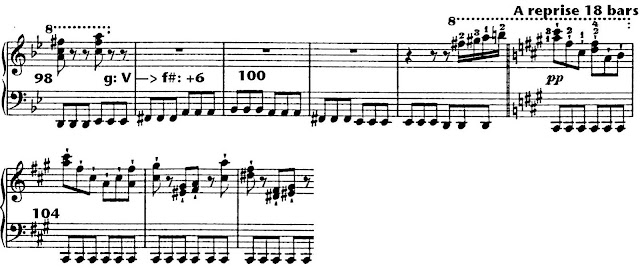Here is a brief narrative of the design: An introduction precedes the 16-bar main theme (A):
An abrupt shift to the secondary theme (B), in the relative major key "giocoso" -- it leads back to the introduction a complete reprise of A.
Then B returns, but now a half-step higher, in Bb major--a major third away from F# minor and a distant tonal relationship. This leads eventually to its own relative minor, G minor, and what I have called "C" but which is really a distorted variant of A.
Using a traditional device, where G minor: V7 becomes F# minor: +6 Liszt returns to F# minor but the harmony is unstable (over V).
The B theme returns one last time, now in F# major,
from which moves the (relatively) slow ascent to the structural cadence. A coda (not shown) reminds us of the figures and repeated notes of C.
I am not overly pleased with the way that the long ascending line from A#5 to E#6 is split at C#6, but that disruption of a line is very common in Schenkerian analysis, and -- as here -- at the point where the foreground passes into the middleground or a middleground 2 to middleground 1.









